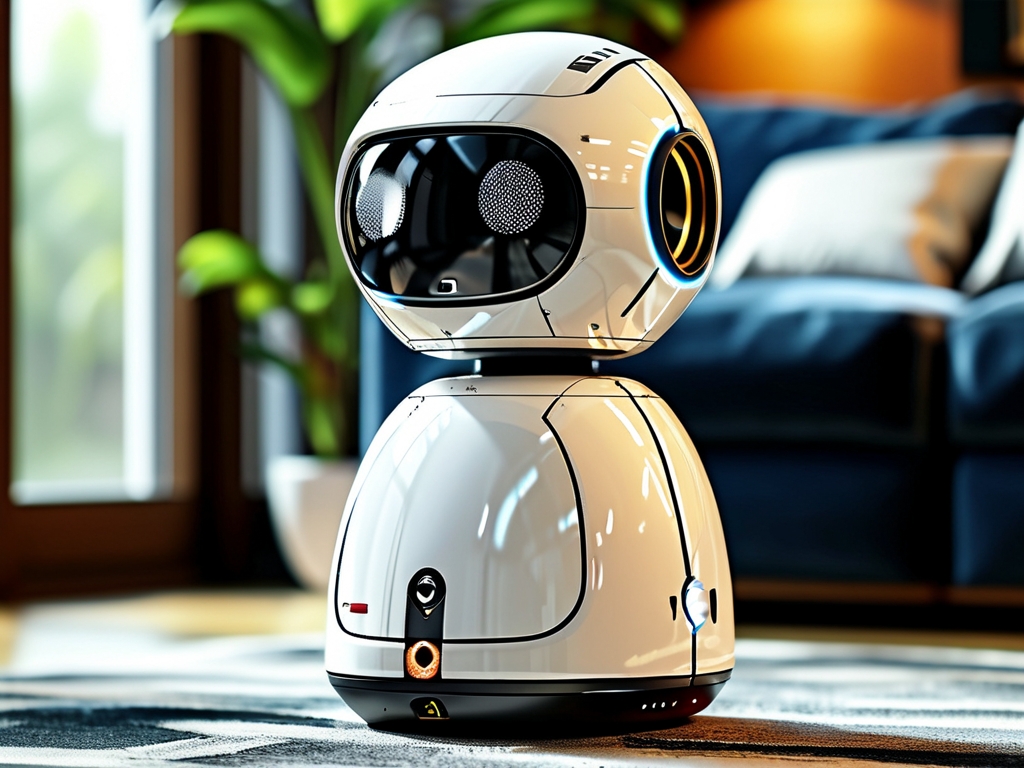The rapid evolution of home robotics technology is redefining how humans interact with their living spaces. From vacuuming floors to managing complex household tasks, state-of-the-art domestic robots are no longer confined to science fiction—they are here, and they are transforming daily life. This article delves into the cutting-edge advancements in home robotics, their applications, challenges, and the ethical considerations shaping this revolutionary field.

1. Breakthroughs in Home Robotics Technology
Modern home robots leverage a fusion of artificial intelligence (AI), machine learning, and advanced sensor systems to perform tasks with unprecedented precision. For instance, AI-driven navigation algorithms enable robots like the iRobot Roomba j9+ to map homes in 3D, avoiding obstacles while optimizing cleaning routes. These systems learn from user behavior, adapting schedules based on when rooms are occupied or prone to messes.
Another leap is seen in multifunctional robotic arms. Devices such as Samsung’s Bot Handy use computer vision and tactile feedback to handle fragile objects, pour drinks, or organize cluttered spaces. Equipped with force-sensitive grippers, they mimic human dexterity, reducing the risk of accidents. Meanwhile, voice and gesture recognition—powered by natural language processing (NLP)—allow robots like Amazon Astro to respond to commands like “fetch a water bottle” or “check on the baby.”
2. Integration with Smart Home Ecosystems
Today’s home robots are not standalone devices; they are central hubs in interconnected smart home systems. For example, LG’s CLOi ServeBot syncs with IoT-enabled appliances, adjusting thermostats or preheating ovens while tidying up. Using edge computing, these robots process data locally to minimize latency, ensuring real-time responses.
Moreover, cloud-based AI platforms enable robots to share knowledge globally. If one robot learns a better method to fold laundry, that data can be disseminated to millions of others overnight. This collective intelligence, seen in Tesla’s Optimus prototypes, promises continuous improvement across devices.
3. Applications Beyond Basic Chores
The latest robots are venturing into roles once reserved for humans:
- Health and Elderly Care: Robots like Toyota’s HSR-2 assist seniors with mobility, medication reminders, and emergency alerts. Equipped with vital-sign sensors, they can detect falls or irregular heartbeats and notify caregivers.
- Education and Companionship: Sony’s Aibo robotic dog uses emotional AI to recognize family members and adapt its behavior to uplift moods. Similarly, Moxie by Embodied Inc. tutors children through interactive storytelling.
- Security: Drones such as Ring Always Home Cam patrol homes autonomously, streaming live footage to owners’ phones while integrating with alarm systems.
4. Ethical and Practical Challenges
Despite their potential, home robots raise critical concerns:
- Privacy Risks: Always-on cameras and microphones risk data breaches. For example, a hacked robot could expose intimate family moments or daily routines.
- Job Displacement: As robots take over tasks like cooking or gardening, low-skilled domestic workers face unemployment risks.
- Dependency: Over-reliance on robots might erode practical skills, such as basic home maintenance or childcare.
- Cost Barriers: High-end models like Boston Dynamics’ Spot cost over $70,000, limiting access to affluent households.
5. The Road Ahead: Personalization and Sustainability
Future innovations aim to make robots more intuitive and eco-friendly. Startups like Figure AI are developing robots that recycle household waste or optimize energy usage. Meanwhile, emotionally intelligent robots—using affective computing—will recognize frustration or joy, tailoring interactions to users’ emotional states.
Another frontier is self-repairing robotics. Researchers at MIT are experimenting with materials that “heal” minor damages, reducing maintenance needs. Additionally, solar-powered designs and modular components could lower environmental footprints.
State-of-the-art home robotics technology is not just about convenience—it’s about reimagining human potential. By offloading mundane tasks, these systems free people to focus on creativity, relationships, and personal growth. However, balancing innovation with ethical safeguards remains crucial. As robots become family members rather than tools, society must ensure they enhance—not undermine—the qualities that make us human.



